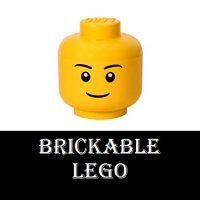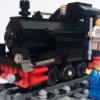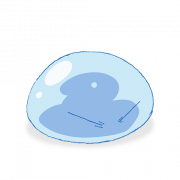Search the Community
Showing results for tags 'tips'.
Found 20 results
-
I got a hankering to build a rally car because I like the aesthetic, but I'm not sure what features a typical rally car should have. Any suggestions? I saw a lot of rally cars that are actually smaller cars with wide body kits and larger tires, so maybe they should be 8-wide like typical Speed Champions cars? Or is 6-7 wide more appropriate? What tires would I use? What are the interiors like, mostly empty? What equipment is in there? Are they built differently depending on the racing environment? Hopefully I can bang out something cool this weekend.
-
I need help with a small section of a MOC. I've created a rock wall out of a bunch of 2449 1x3x2 inverted slope bricks - I stack four of the bricks on top of each other, there are 18 columns of bricks, and each column is raised two plates higher than the last one. However, each slope brick is only attached by one stud, which is a very weak connection, and ultimately they will need to help support a large rectangular roof that will sit over the entire chamber. Any idea how I can connect all of the slope bricks together to form a strong, solid wall?
-
Hello! So, I am starting to create a realistic LEGO City Layout, based off of metropolutan areas like New York City or Hong Kong. I want to have billboards in my city to add the feel of Corporate America and commercialism in my city (which are defining features of cities like NYC). I abhor stickers, because I would rather have a brick-built sign than a sticker (I reserve stickers for things you can't build, like a menu sign within a building). Any tips on making realistic brick-built billboards? I see all these cool images online, many of whom use SNOT, but I don't know how they specifically built it. I am quite new to MOC building in general, so I appreciate any and all help! Thanks
-

LEGO Technic Tutorials, Tips & Tricks - Index
Brickable LEGO posted a topic in LEGO Technic, Mindstorms, Model Team and Scale Modeling
Hey all LEGO Technic Builders, First of all I'm an old guest member on this forum but today i decided to join this amazing Forum <3 I decided to male this topic which will be an index for all my LEGO Technic Tutorials i made on YouTube and it will be updated regularly when I publish any new content: Hope this topic will be useful to you and positive feedback are very welcomed. I know there are super professional builders here which i actually learn from them the art of LEGO Technic , their opinions will be so much appreciated :D Thank you :) 1- Adjustable Stiffness LEGO Technic Suspension (Shock Absorber/ Spring): 2- LEGO Technic Custom Pullback Motor Without Rubber Bands: 3- LEGO Technic Return to Center Mechanism using M-Motor and Shock Absorbers (No Rubber Bands!) 4- LEGO Technic M-Motor Steering Mechanism - Without Servo Motor: 5- LEGO Technic Working Exhaust System (First Prototype Test): 6- Improved Version: How to make a Custom LEGO Technic Shock Absorber (Spring): 7- High Precision Air Flow Control LEGO Technic Manual Pneumatic Valve: 8- The Simplest LEGO Technic RC Chassis Ever (Build under 15 minutes) 9- LEGO Technic Safari/Off-Roader Winch (Modular & Motorized): 10- The Magic of Hobson's Joint (Coupling) Done in LEGO Technic (SLOW MOTION): 11- LEGO Technic Steering Mechanism With Drive (Using Universal Joints!): 12- LEGO Technic Steering Mechanism Without Steering Rack: 13- LEGO Technic Pneumatic Braking System: 14- LEGO Technic Dog Gear Coupling Mechanism: 15- LEGO Technic High Precision Pneumatic Switch: 16- LEGO Technic One Direction Axle Rotation Mechanism: 17- LEGO Technic Simple Axle Lock: 18- LEGO Technic Custom Pullback Motor Version 2.0: 19- LEGO Technic Compact Arduino UNO Case Idea: 20- The Most Compact LEGO Technic Steering Mechanism (Tight Wheel Wells): 21- How to Build a LEGO Technic Custom Turntable with 3 Driving Options: 22- How to Build a LEGO Technic Mini Steering System (For Narrow Vehicles with Drive): 23- How to Build a LEGO Technic Realistic Car Clutch: 24- How to Build SCHMIDT Coupling in LEGO Technic: 25- Testing Schmidt Coupling in LEGO Technic : More Tutorials will be added soon, THANK YOU ALL :) -
What I mean is, for example how on some Batmobiles (Notably the 1989 version) and the 1989 Batwing, as well as the Delta-7B Aethersprite-class light interceptor from Star Wars or the machine guns on modern fighter jets, the guns are receded/receding into the hull. Has anyone figured out any kind of techniques to try to replicate that?
- 2 replies
-
- techniques
- batman
-
(and 3 more)
Tagged with:
-
Hey all, I recently compiles this list of building tips and tricks on how to make more advanced Lego trees. The video includes ways to build sturdier trees, ideas for adding different angles to the branches, and ways to increase the foliage of a branch. Check it out on my YouTube channel.
-
I thought this might be useful for new builders out there. Car Butts by Henchmen4Hire, on Flickr This is a look at how I built the rears on these 8-wide cars. To start, I messed around until I got a versatile template that let me build in all directions. It was simple in the end, the black [Brackets] attach to the [1x1 Brick with side stud], which rests on the Speed Champions [Mudguard]. The two grey [Modified plate with side studs] let me add tiles or whatever to smooth the trunk lid area. After adding a plate to the [brackets], facing the sides of the car, the length from plate-to-plate is 7 studs wide, so you can use [jumper plates] to neatly fill the space and create interesting designs. Everything can be as flush or as staggered as you want. For example, the plates going towards the sides of the car can be flush with the body, or you can add [slopes] to add a$$- I mean, to add mass. lol I'm sure another SNOT brick or plate can be added to build upsidedown too (maybe to add greeble to the undercarriage?), I haven't needed to yet though. This could possibly also work for the car's nose, though I tend to use one-off builds there because I like leaving space for an engine. There you go, hope it helps. Feel free to share your techniques for building cars! Maybe we can make this some kind of encyclopedia for making kickass cars.
-
Why aren't there any any moc ideas posted? You have to search google very thoroughly in order to find stuff like this: I'd love to see peoples takes on how to build custom torsos or how to build custom limbs.. Or just outright clever ideas.. I'm currently stuck trying to figure out how to widen up a torso from the waist up in order to make a WH40K styled dreadnought torso.. If any of you have clever ideas you'd like to share, please post them below. Tips, ideas or frames like in the image is very helpful for newbie moccers.
-
For our Sioux.NET on Track project (see https://siouxnetontrack.wordpress.com), we not only write a PC application in Microsoft.NET (C#). But we also write quite some code that runs on the EV3 bricks. In this article, you'll find programming tips & tricks for the Lego Mindstorms EV3 programming environment. Is it possible to have two or more EV3’s in Daisy Chain mode and use WiFi to connect to the PC application? Yes, you can. Read the full article how you can achieve this at the blog: https://siouxnetontrack.wordpress.com/2017/04/08/how-to-ev3s-in-daisy-chain-mode-plus-wifi You can use two or more threads in parallel to run on an EV3. But how do you synchonize them? Read the article how to do this at the blog: https://siouxnetontrack.wordpress.com/2017/04/02/how-to-synchronizing-two-threads/ More to come later. Enjoy, Hans (moderator of our Wordpress blog Sioux.NET on Track)
-
- programming
- mindstorms
-
(and 4 more)
Tagged with:
-
Advice 4 Me Thread
TechnicRCRacer posted a topic in LEGO Technic, Mindstorms, Model Team and Scale Modeling
Hi, I set this up because I have noticed that most of the builders on here are much better than me. I see many things that I definitely have the parts to do, but I don't have the brains for it. Example: McPherson suspension, locking doors, brakes, etc. Does anyone have any good advice from building experience? Anything is useful. -

Technic Video Tips (Videography)
BusterHaus posted a topic in LEGO Technic, Mindstorms, Model Team and Scale Modeling
DESCRIPTION This is a topic for sharing your tips on shooting and editing videos of your Technic creations. We have a similar topic for Technic Photography, and many of us know how to take and edit very nice pictures, but video brings additional challenges. You are invited to share tips for the following areas: Indoor light types (Fluorescent / LED / Tungsten / Halogen) Types of light diffusers (umbrella vs softbox) Camera types and settings Shooting angles and framing Additional equipment you use (microphones, dollies, handheld stabilizers, tripods) Ways to attach action cameras like GoPro to your models Video editing software Video editing tips Royalty-free music sources Any other tips to make videos better If possible, please show pictures of your setup and a video that was shot with it. The goal is to help others make better videos, so you can enjoy watching them. Thanks. RESOURCES Sound https://www.youtube.com/audiolibrary/music - Free music for YouTube projects http://incompetech.com/ - Royalty-free music http://www.freesound.org/ - Creative Commons Licensed sounds https://musescore.org/en - Music Composing Software https://lmms.io/ - Music Composing Software Video Editing Software https://www.blackmagicdesign.com/products/davinciresolve - If you have outgrown Windows Movie Maker Discussions -
ive been looking around the net for a bit trying to find info and techniques for building under structures to larger mocs. any ideas hints thoughts my goal is obviously to have a strong base so it can be moved but also save on parts
-
I plan to display some creations at Brick 2015 in the UK. This will probably be the first display at a LEGO convention as well as purchasing specific parts for MOC's. I normally build on LEGO Digital Designer and occasionally build with actual bricks, examples can be seen here: Now for your help! I need to know what is the best way to purchase parts for LEGO MOC's, I plan to display some of my best creations that you guys have already seen as well as some new secret projects. What is the best option or cheapest way to build LEGO MOC's? Pick-A-Brick, buying multiple sets, Bricklink/Brickowl etc. One big problem I've come across is budget. I have acsses to just over £1100 from now until October. Should I spend all of it on creating MOC's for Brick2015 or should I mix it up and buy a few sets? Is it worth taking apart sets for specific parts, I own many LEGO Super Heroes sets as well as LEGO Ideas and D2C sets? I've been to Brick last year and saw many large layouts. What is the best size to build at? I would like to build some of my best MOC's I have already shown on Flickr. Any tips for smaller builds in similar sizes to official LEGO sets? I'm currently thinking of doing a large layout as the center piece to attract attention and have smaller builds on the side. What do you think? How do you guys plan in advance? Any other tips and ideas you guys have to help me with your past experiences of LEGO conventions and building MOC's? Any feedback and suggestions are welcome. Thanks, Adeel
-
Hey Guys! I got into train by the first sight of the amazing Emerald Night, So I have never seen an "Era" of trains end. So I was wondering to everyone who has gone through the experience of a changing era, what to do when this happens. So say the PF train era is about to end and being replaced by something else, what would you do? -Is it a good idea to buy a lot of PF elements like Recievers, Bat. Boxes, train motors? Just as I have noticed that around every 10-15-20 years, it changes to another "Era". So it is getting close to the 10 year mark since PF has been avaliable, so I want to make sure I know what the best thing to do (as either a money investment or spares/extras I can use later). Thanks guys! -RailCo P.S. I hope other people like me can also learn from you guys too!
-

[HELP] Large scale suspension
z3_2drive posted a topic in LEGO Technic, Mindstorms, Model Team and Scale Modeling
Hello, I have been busy this summer and haven't done much building, and the offroad project on my desk will most likely be taken apart because of some doubts of the eventual performance. After spending some time in Silicon valley with NSLC, I noticed the many Tesla vehicles in the area, and was inspired to make another road-going vehicle. This time I want to focus on making a proper suspension setup based on either the Tesla Roadster or Model S, as well as a slightly different drivetrain in order to make room for the rear axle setup. The reason I made this topic is to get some useful info about parts I could use in order to recreate these setups as realistically as possible while still retaining strength, as I hope to use them in an RC MOC capable of 19+ kmh. Here are the photos: Lotus/Tesla Roadster front suspension: Model S front suspension: It doesn't have to look exactly the same, but rather perform the same functions. As for scale, the shock absorber I plan to use is this one:- 9 replies
-
- tips
- suspension
-
(and 3 more)
Tagged with:
-
Well im about to buy alot of lego bricks And i want to start building a clone base, But im not sure which base I want to create But this is my first big build. Any tips or advice about this
-
So i am almost done with sorting all my lego (thank god). And i want to start building a rebel base, I think hoth but im not sure yet. But this is my first big build. So i am in need of tips and tricks to build :). question changed, what is the best way to make a nice build but don't make it to expensive?
-

ASK HERE MOC-stuck? Ask for general building advice here!
mrklaw posted a topic in General LEGO Discussion
I'm trying to make a slightly larger model of the Big Ben architecture set, to allow me to not have the clock face sticking out. But I've run into trouble with the roof. Seems that Lego don't make any 75 degree corner pieces. This seems odd, as they have a 75 degree slope, and a roof 'cap' but no corners. So any suggestions how to work around this? I was thinking to use the smallest wedge pieces, but I'm having trouble figuring out how to hinge them at an angle to form a roof. I've tried the standard 45 degree slopes and they just look wrong. I need the roof to be four studs wide at the bottom, two studs wide at the top and about a brick high, maybe 4 studs. Plus I need to be able to build on top of it, so I need to be able to get something through from underneath - even if it's just a pole -
Thanks to Sandy for the banner! Introduction “Ah! Hello there! You must be the new class of students. Welcome, welcome! I’m Bilbert Wigglepike, adventurer, playwright, and actor extraordinaire! Of course, as theatre enthusiasts, you must have seen my gripping yet hilarious comedy, The Life of Beasley? No? What about my romantic classic Gnomeo and Harriet? Rated eight thumbs up by that unlucky critic who took the Zeigfried girl’s seat! Really, no? Well, surely you caught my dear friend Elphaba’s autobiographical musical Wicked during her short time here? No?!? My goodness, you need more help than I thought!” “I can teach you to bewitch the mind, to ensnare the senses, to pull at the very soul of all those who see you. Not through sorcery, trickery, alchemy, but through your own quirks, history, and emotional honesty." "I warn you: it will not be easy. Crafting interesting characters is a work of intention more than of luck. It requires concentration, focus, and determination. But for those who persevere...well, generations of actors have hungered after the joy of performance, the adulation of a pleased audience. And some small degree of that unique, exquisite satisfaction...can be yours.” “And let me say this: acting, or, as I prefer to think of it, role-playing, is Serious Business. I will not tolerate any foolishness...” “...hijinks...” “...shenanigans...” “...or tomfoolery of any kind in my Theatre!” “...Oh, who am I kidding?” “*Sigh* Welcome to Heroica Theatre...” Heroica Theatre is an Out-Of-Character discussion topic, where various thoughts, ideas, and advice about portraying your character can be discussed. Along the way, Bilbert and his troupe of performers (including several familiar faces!) will illustrate some of the concepts being discussed. But don’t let that stop you: any topic related to any aspect of roleplaying is welcome at any time. And feel free to be creative; who knows? Maybe you will be the Heroica Theatre’s next great star... Opening Night: The Roleplaying Basics Act I. Creating an Identity: Character Story Inspiration “This man was crushed by anvil. I...never seen thing so gruesome.” “I understand, Hoptet. After all, murder is…heavy stuff.” YEAAAAAAAAAAH! “...” “...” “Wanna get a banana burger?” “OK.” To sum up the acting technique of “transference” pioneered by the great actress Uta Hagen, one might say that “Acting is about finding ourselves within the character, and the character within ourselves.” Roleplaying is much the same; though the form and style may be different, it is still about taking elements of ourselves, combining them with elements we consider to be not of ourselves, and using them to create an entirely new character to display to the world. The primary difference between acting and roleplaying is, in roleplaying there is no set script, and the players together combine their talents to breathe life into the world. Even the greatest players in the world can’t play a character that is undefined, however. There’s a reason we don’t read books about speechless, lifeless, immobile statues; it would be dull and uninteresting. A character without their own defining traits has little more life than one of those statues. Roleplaying great Waterbrick Down once said this: If you get stuck, remember some of the basic questions: who, where, when, why, and, later on, how. Who was my character raised to be? Where was he/she born, where did he/she live before coming to Heroica? When did my character leave home and come to Eubric? Why did my character leave home and come to Eubric? Remember, too, that great characters are defined by contrasts, the difference between who they should be and who they are; consider: the sacrilegious, irresponsible paladin with a drinking problem, the ex-bandit ogre with a noble spirit, the wacky, comedic magician marked by darkness, the 200-year-old Elf with the maturity of a teenager, the rogue with a heart of gold, the quirky chicken sidekick who’s actually a demon of darkness, the honorable orc who becomes a paladin. Real people are messy and at times inconsistent; your character should be, too. Above all: your character should make sense to himself. All of our quirks and inconsistencies have some sort of reasoning or story behind them. You don’t have to know everything, but if you can have a few defining moments of their life set before you start playing, you’ll be in a good position to start off strong. If you can, from your character’s perspective, examine what you know about their history and find it reasonable and believable, then you’ve got a good base upon which later roleplaying can build. Coming Soon: Crafting a Back-Story: The Present as a Key to the Past Act II. Weaknesses and Strengths: Believability in Relatability: “Verily I say unto thee, Hoptet: he who had the less strength was the greater Hero.” “...” “What? I was channeling an ancestor of mine! Sheesh, kids these days...” Let’s be honest: a character that always succeeds, has no flaws, and never makes mistakes (or worse, who blatantly disregards their failures) is rather unlikeable. There’s an entire trope about Mary Sues and Marty Stus that cover exactly how they become unlikeable in far more detail than I can here. On the other hand, a character that tries to pour on the angst by constantly failing is no more likeable. The key is to find a good balance between the two, in order to make your character actually likeable. In all honesty, writing a believable, relatable character is kind of like trying to plan and host a game or a Quest; the key word here is balance, making your character strong enough, within reason, to believably handle themselves in the dangerous world of Heroica, while at the same time keeping them weak enough to, well, fail once in a while, which the dice WILL cause from time to time. This is doubly important in non-dice-based situations, where poor roleplaying can make you look quite silly indeed; if you’re a brand-new Hero who’s just arrived at the Hall, and you pick a fight with an experienced Hero with an Advanced Class, you are not going to be able to knock them out in one hit, no matter how poetic your description of the event; it’s just not believable. (This brings up another common roleplaying problem, one we’ll cover more in Act III.) Remember when we were defining the broad strokes of the character, adding depth through contradictions? That’s also a great example of balanced, relatable believability. Consider Lord Lawrence Boomingham, a mighty Paladin of Heroica. He is strong and hardy, as a Paladin he defends himself and his allies with his shield while also possessing the ability to heal them and himself when injured; a potent combination, to be sure. Bravery (bordering on impulsiveness and recklessness), combat skill and strength, and magical healing abilities are his strengths. However, he also has his weaknesses: he’s a chronic alcoholic, he’s brash, arrogant, rude, self-centered, racist, and, perhaps most tellingly for a Paladin, thoroughly irreverent. His strengths are balanced by his weaknesses, and though he may not always be likeable, he can be at times, and above all he’s always relatable. Let’s consider another great example: Althior Emorith, Sage. Armed with plenty of great gear, a magical sidekick, an Evoker girlfriend, and every single elemental Gem in existence, at first glance he may seem unstoppable, but he’s balanced out by his weaknesses. For one thing, Finnegan is incompetent, and in-character Althior isn’t much further behind. He’s a bit impulsive, has an ego the size of Jupiter, and takes himself and his work way too seriously. Althior also exhibits a different kind of dramatic balance; he straddles the line between “serious” roleplaying and comedic relief, at times the noble, troubled magician marked by the demon Abraxas himself, at others just a goofy loon. Character flaws are important, but this final observation is even more so: none of the best players in Heroica try to win all the time, and this is key. Good players let the dice fall as they may, and, when their character fails, they use it as an opportunity for character development. In Quest 4: Taming the Lions, De’kra the Shade Echo faced a string of horrifically bad luck. Rather than complaining, he used it as an opportunity to become more humble, even roleplaying his own “death” as a way to develop and flesh out his character. Likewise, in Quest 15: Hoisting Down the Jolly Roger, the Norse Barbarian Eric (and the entire party, actually) had to deal with short supplies and luck so terrible that the majority of the party went down in almost every battle! In a feat of great roleplaying that must be seen to be believed, Eric allowed this event to develop his character so much that it changed which Advanced Class he decided to take back at the Hall. Opportunities for character development can be rare, so failures are a welcome blessing in that regard. In short: don’t be afraid to fail! You might just end up more interesting because of it. Most importantly: don’t tell us all at once. Roleplaying requires patience; we don’t want to see the character’s whole story in an hour-long episode, we want to see it unfold over weeks, months, years. Coming Soon: The Road Goes Ever On: Playing your character for the long haul Act III. Characters in Conflict: Playing a Jerk Without Being a Jerk “All right, auditions for Elphaba’s yearly revival of Wicked are open once again, which means it’s time to figure out who is going to play who. Let’s see who we have here first. Roll call! De’kra?” “De’kra is present.” “Harriet? Mehmet?” “Harriet the Super Sleuth is here for the poultry and applesauce.” “As is Mehmet Attabar.” “I, Hoptet, ready.” “Drake?” “I’m here.” “And I’m here.” “And I’m here.” “And I am!” “Well, I was here before all of you, so...” “Shut up, Drake, you KNOW I was here before even you were.” “Please, Drake everyone knows all of you were here after ME!” “Hey, I’m here, too, you know--” “Uh, you guys do realize that multiple personalities do not qualify you for multiple roles, right? And, contrary to popular belief, it does NOT in itself make you more interesting, so--” “I disagree!” “Me too!” “I disagree as well!” “And me!” “*sigh*” “You and I are actually the same person, does that count?” “No, dear, we’re here as a joke, so we don’t count; we’re not real characters.” “NOT REAL CHARACTERS?!?!” “My parents are dead!” “Uh...sir, stories of familial death are rather overused as well, perhaps you should consider--” “DEAD!” “*sigh* Do none of you understand? Bizarre, over-the-top quirks of your personality are not what make for interesting characters! It’s conflict! Quirks define the personality, and conflict develops it! When used within reason, conflict can--” “RAAAAAAAH! HULK HATE PUNY GOD!” “Uh-oh.” “No, no, you've got it all wrong! To use conflict, you have to--” “HULK SMASH!” “That’ll teach you to run around with that no-good tramp Harriet!” “OW! I said I was sorry! OW! Finnegan made me do it! YEOOOOOOWWW!” “Well, at least SOMEONE'S using conflict right. Humorously, granted, but right.” “OW! OW! OW! OW!” “...help...OW...me...” “Ooh, looks like fun! Can I join in, Bilbert?” “ No, Harriet. No you may not.” There are three elements to every successful story: character, conflict, and creativity. We’ve already learned how to define the broad strokes of the character; now we move forward into the area that will bring your character to life: conflict. To explain why, let’s do a quick review: We’ve figured out what makes your character unique, we’ve made sure that the character’s quirks make sense, we’ve made efforts to keep the character believable, and, importantly, we’ve learned not to rush the roleplaying, but instead to keep things in reserve and reveal them over time, when the opportunity presents itself. You now have the makings of a deep, interesting, fun charcter--congratulations! There’s only one problem: how to reveal this? Where ARE the opportunities for character revelation and development? The answer, of course, is conflict, but there’s one more thing we must observe. Why ARE the rather annoying, overdone character aspects we saw a few moments ago so particularly prevalent? (Granted, these examples were rather over-the-top, but they are still remarkably common.) Why do new roleplayers perceive them (incorrectly) as THE go-to fixes for roleplaying*? Ironically, it’s because they instinctively recognize the importance of conflict, but fail to see opportunities for it outside of their own “bubble.” Conflict comes in two flavors: internal and external. Internal conflict occurs when two aspects of a character’s personality come into conflict; it’s an essential part of a realistic, honest portrayal of a character, but it is NOT the place to start your development. For one thing, internal conflict as a primary motivating factor is much better suited to novels, movies, and other works involving a single protagonist. In a world defined by the interactions between characters, external conflict is far more important; as roleplaying great Zepher once put it, External conflict, on the other hand, is not only a great opportunity for roleplaying, it’s also part of being a generous roleplayer; after all, since interaction with someone else’s character is a valuable opportunity for you, it stands to reason that it is just as valuable an opportunity for the other party. Character interactions are the heart of an open roleplaying community, and if you make an effort to help others’ characters grow, their own responses will return the favor. A word of caution, however: pets and other “companions” are NOT sources of external conflict; it may defy logic, but interactions between any characters played BY you are considered internal conflict. To put it another way, when two (or more) of your own characters interact, no matter what happens, YOU have determined the course and end result of the interaction; unless you are a superb roleplayer, there is little risk of anything happening that you didn’t already expect. By contrast, you never know where external interactions will take you; for example, Althior and Arthur’s interactions on Quest 17 led to an apprenticeship that neither party expected. As the old saying goes, “no risk, no reward.” So, how should you go about finding and using conflict? Here’s a hint: it’s not by walking up to another character and randomly punching them in the face, or challenging them to a drinking contest, or accusing them of burning down your home village. Such things, when planned in private with the help and consent of both players, can be dramatic and interesting both to watch and to play, but it’s seldom the place to begin. Just walk around, casually comment on the various conversations and goings-on of the time, and generally just react to things the way your character would. (Knowing to a degree what your character will do or say in a given situation is an important part of defining who they are, the “basic questions” of Act I will help again here.) Sooner or later, your character will say something another disagrees with, or they will say something your character objects to. Congratulations, you’ve just encountered external conflict! Now what? Do you punch them in the face now? Unsurprisingly, the answer is (usually) no. Often it’s best to let the conflicts simmer, lightly disagreeing as anyone would, but for the most part acting with composure and decorum. Only once your character has endured a realistic amount of provocation should they respond in kind. How much is enough? That varies by character. A roaring Barbarian brute would likely be more likely to lose his temper in an argument than a diplomatic Knight, but what of a Knight whose dead lover was an Orcish maiden, and the boisterous Cleric at the bar is boasting of his superiority over those “worthless greenskins”? In any case, the key is to wait for the right moment. Roleplaying is, really, an endless string of compounding reactions; for the most part, you can let the world itself get the ball rolling. One final tip: anger is not the only response to conflict; it’s simply the easiest. Using the example of the Knight with the dead Orcish lover, a new or intermediate roleplayer’s reaction might be to leap from the bar and deliver an angry tirade against the racist, self-righteous Cleric; a more seasoned veteran’s response, on the other hand, might go something like this: Kelwyn Greycloak felt an empty burning sensation in his gut, one that had nothing to do with the spicy meal Schezerade had set before him. He looked up across the bar at the arrogant Cleric. “Judge not what thou hast not seen,” he remarked coldly. Dropping a few copper commons on the table for the--ironically Orcish--barmaid, he set out for the balcony. Three years. Three years it had been since Kelwyn had lost her. As he reminisced about those happier days, he felt the Cleric’s eyes gaze contemptuously upon him, and he turned away, his body language declaring to all his desire for solitude. Not only is this a more unusual and interesting response, but it also allows for a more reasonable third party--perhaps a reassuring Ranger like Skrall, or the mostly-goofy but occasionally wise Mage Althior to speak to the Knight, showing a somewhat different side to their own character and allowing Kelwyn, in turn, to reveal more about his past to them. The reaction of Kelwyn to the Cleric allows other characters to react to him, and him to them, and so on and so forth. Less obvious choices like this one are more difficult than instinctive reactions, but they also allow greater opportunities than mere arguing or fighting. And make no mistake: good roleplaying is hard. But at the end of the day, it’s a greatly rewarding experience, and well worth the time and effort. Unusual roleplaying choices are often linked to characters with an unusual perspective on a given situation. Players who encounter difficulties in creating such unusual perspectives are encouraged to read about De’kra the Echo (played by Tanma), Cronk the Orcish Paladin (played by CorneliusMurdock), and the devious but not necessarily evil Lady Wren (an NPC played by Zepher). Coming Soon: Rush Hero: Exercising Patience in Roleplaying. Act IV. Burnin' Love: Cheap chocolates and rushed role-playing This Act has its own soundtrack . “When you meet the someone who was meant for you, before two can become one there’s something you must do.” “Do you pull each other’s tails?” “Do you feed each other seeds?” “No! There is something sweeter everybody needs…” “ I've been dreaming of a true love's kiss, and a prince I'm hoping comes with this, That's what brings everaftering so happy!” “ And that's the reason we need lips so much, for lips are the only things that touch. So to spend a life of endless bliss, Just find who you love through true love's kiss!” “ Aaaah, aaaah, aaaaaaaaaaaah!” “Aaaaaugh! Aaaaaugh! Aaaaaaaaaaaaugh!” “She been dreaming of true love kiss?” “And a prince she hope comes with this; That's what bring everaftering so happy.” “That reason she need lips so much?” “Yes, lips are only thing that touch.” “ So to spend a life of endless bliss, Just find who you love through true love's kiss!” “ You're the fairest maid I've ever met, You were made...” “ ...to finish your duet!” “ :sing: And in years to come we'll reminisce...” “ How we came to love,” “ And grew and grew love,” “ :sing: Since first we knew love through true love's kiss!!!” *applause* “Ahem. Yes, well, done good show everyone! There’s just one problem...it’s all absolute poppycock.” “Did someone say cock?” “*sigh*” Love. For some reason, it’s one of the most popular attempts at roleplaying. “I’ll say. ” You get out of here! Now, as I was saying, roleplaying romance is extremely common, to the point of being overused. The thing is, almost no one knows how to do it right. Here’s the thing: there’s more to love than rushed roleplaying and cheap chocolates. Love between your character and someone else’s should flow naturally out of good roleplaying in general, it’s not a “quick fix” for a character-developing interaction. How many couples do you know of in the real world who fell into instant, everlasting love at first sight? No, Haldor and Jess and Althior and Alexis don’t count. Now, if I had my way, no one would even try to roleplay relationships, it would just happen between characters--or not. However, since few people are willing to let such things develop, let’s go over some of the common romantic archetypes, and how to use them correctly. First up is the ever suave ladies’ man. This character is completely uninterested in long-term relationships and focuses primarily on the physical aspect of relationships. Note that, despite the term “ladies’ man,” this archetype swings both ways; Harriet the...playwright/actress is a prime example for those seeking to fulfill this archetype. Granted, she is rather unsubtle about it, but if you’re the type to try and force a relationship for your character then subtlety is most likely not your strong suit. One final note: the dramatic arc of “woman meets a ladies’ man and slowly but surely ‘tames’ him with her love” has been done to death. Don’t do it. Next up, we have the “dark but sexy” type, a.k.a. the “bad boy.” This character feigns indifference, which somehow just turns the ladies on. Gods help me if I know why. Expect to see a LOT of skin-tight leather, especially if the character is a woman. By definition, most of these characters will be Rogues, but others can pull it off. This, too is overused, particularly for men. More often than not, you come off looking like an Edward Cullen knock-off, so keep that in mind before you try it. Finally, we have the desperate, failing nerd. This one is less overdone than the others, and is more forgiving as well, but take it too far and you could come off as obnoxious. This is best used as a jumping-off point for other interactions; i.e. as the final stroke of bad luck that sends the character down a darker path--as a defining character trait it gets stale fast. Really, roleplaying love is just like the real thing; if you try to force it, it’ll fall flat. Also, like characters themselves, relationships need flaws and foibles to make them more interesting--a pair of jaded, bitter exes are far more interesting after the breakup than they were during the “honeymoon phase.” In fact, generally speaking, relationships, whether they’re still going or not, are more interesting in retrospect. The start of a relationship is slow, awkward, and honestly difficult both to go through and to watch. Characters who have been together for a while (or who used to be together in the past but aren’t anymore) have a history and background together that lend each other an added depth. This is, at its heart, the purpose of good roleplaying: to give the other characters, through your own actions, and extra dimension of depth and interaction with which to work. In the specific case of relationships, the backdrop of the romance (or the loss thereof) lets the other character reveal aspects about themself that they might not otherwise get to see. And that leads us to my final point. Roleplaying relationships fail (in this case, “fail” means “to become uninteresting”, not necessarily “to break up”) for the same reason so many real ones do: the participants fail to realize that relationships are more about giving than getting. Relationships, when done well, are one of the single most effective ways to add depth and interest to your character. The thing is, you have little control over it; when you choose to build a relationship with another person’s character, you are putting your character’s own development in their hands, and they in yours. Those who recognize this responsibility, and who exercise it with care and discretion, are truly roleplaying greats. Despite my earlier, joking disparaging of their relationships’ origins, Haldor and Jess and Althior and Alexis are both excellent examples of this side of roleplaying; they really do bring out new aspects of each other, and open each other up to unexpected interactions that might not otherwise be possible. You all would do well to learn from their example. Curtain "Well, that's it for Opening Night! We hope you enjoyed it. Be sure to drop by often--I...erm...we're coming up with new plays all the time, and we're always open to comments and criticisms. Enjoy your time at Heroica Theatre!"











